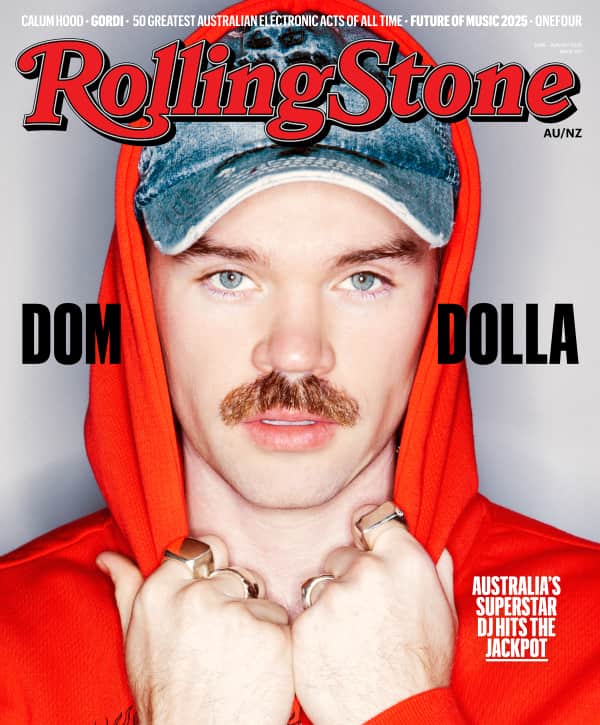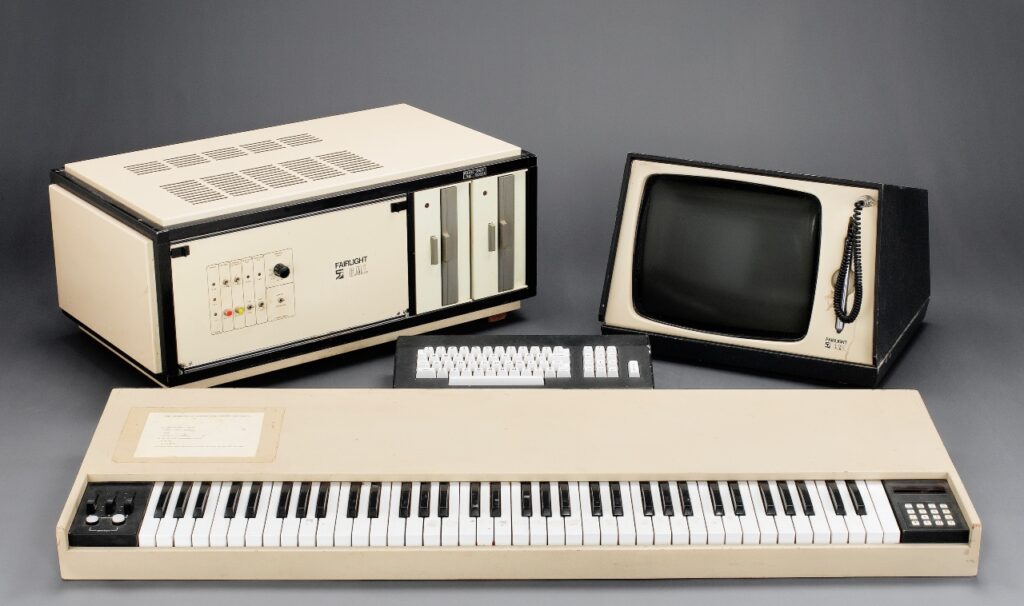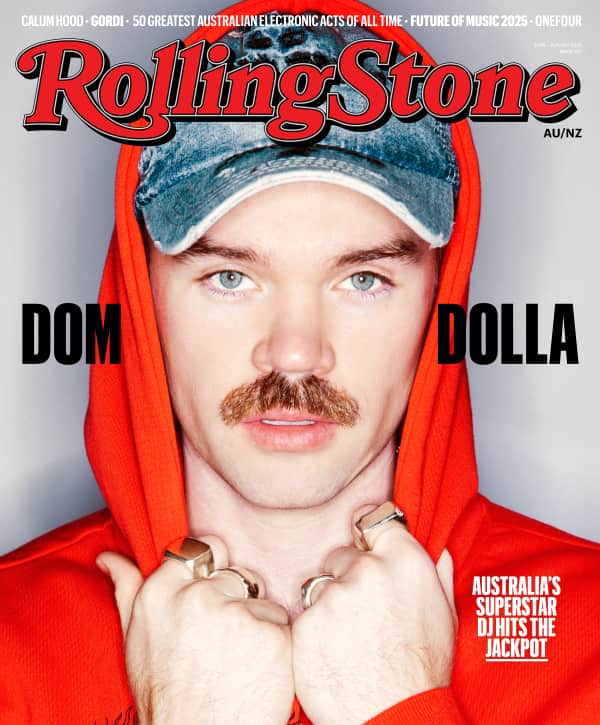Wi-Fi, black box flight recorders, ultrasound, and the Hills Hoist. All great Australian inventions, each revolutionary in concept, design, and application. Add the Fairlight CMI to that heady list.
The machine didn’t save lives, or dry clothes. With its launch in 1979, the Fairlight was the first commercially available digital sampler, a machine that changed the way music could be created and opened up the infinite possibilities of sound — literally at your fingertips.
With the instrument, an artist could digitally record a sound, and play it back on a keyboard. A burp could be performed as a minor chord. A bird chirp could become a choir. As far as game-changing instruments in music go, the Fairlight is right up there with the electric guitar.
“It was a series of accidents,” recounts Peter Vogel, who with fellow computer designer Kim Ryrie, gave the Fairlight to the world.
In addition to sampling, the Fairlight also had a built-in sequencer, a way of recording notes. “The first accident was, I was too lazy to learn to play a keyboard. So I thought, ‘I’ll just write some code,’” says Vogel, now 70. “Then suddenly we had a language where you could just literally put in the name of the note and the length of the note.”
Computing was at its infancy in the 1970s. In the mid-Seventies, the pair had joined forces with Tony Furse and licensed his QASAR M8 design, which had next generation processing power that could do all the patching, so that once it was set it up, and the user got the sound they wanted, they could press ‘save’ for recall at a later time. Essentially, it was a preset.
It was through these first steps that the idea of using the computing power to record and use any sound developed. For the first incarnation of the Fairlight, everything had to be fabricated. Even the notes on the keyboard were made by hand, in Sydney’s Rushcutters Bay, and a futuristic light pen was invented that could manipulate sound on a monitor. These extra features gave the Fairlight team a “considerable leg up” for a commercial application reality.
Love Music?
Get your daily dose of everything happening in Australian/New Zealand music and globally.
Banks of sounds would be recorded and made available on floppy discs. Fairlight libraries. A studio producer could now become an orchestra. And with every revolution in technology, a pushback. At one stage, the Australian Musicians Union placed a ban on its members working in studios that housed the device. “My response to that was that I phoned them up, as you did in those days, and said I wanted to join the union,” Vogel remembers.
The membership form arrived in the mail, and Vogel photocopied it about 20 times, filling them out in the names of Fairlight 1, Fairlight 2, and Fairlight 3. He never heard back.
Vogel just might’ve invented trolling, too.
Vogel embarked on a roadshow of studios in the United States, where he demonstrated this new wizardry to artists and producers who could harness a new expression through sampling technology.
Earlier adopters included Herbie Hancock in the US, Peter Gabriel in the UK, Jean-Michel Jarre in France, and Iva Davies in Australia, all of whom would introduce the instrument to their communities. Gabriel presented the machine to Kate Bush and Thomas Dolby.
Music movements emerged from it. In an alternative universe, one without the invention of the Fairlight, dance music would sound entirely different. New wave was probably a flat line.
The Fairlight inventors didn’t know it at the time, but the machine, in the right hands, was a total compositional instrument, one that established the blueprint for the modern Digital Audio Workstation (DAW), on which all digital recordings are created, across all genres. Vogel also played a part in the creation of MIDI, the protocol that enables digital instruments and computers to work seamlessly and talk in the same language.
Jean-Michel Jarre first used one on the 1981 Magnetic Fields LP, and blew minds with his sonic-leap album, Zoolook, from 1984 (the album features a pre-industrial track “Wooloomooloo”, an ode to the Harbour City). The best-selling Australian album of all-time in these parts, John Farnham’s Whispering Jack, was centred around David Hirschfelder’s Fairlight, and it became the centre of Iva Davies’ ICEHOUSE sound.
The instrument meant “a whole world of possibilities,” ICEHOUSE leader Davies told Rolling Stone AU/NZ ahead of his performance at the 2025 Rolling Stone Australia Awards, where he was awarded Icon status. “Those are the sorts of things which are absolute catalysts to new material.”
With its radical combination of sampling and its comprehensive sequencer, the machine transformed the film composition industry. The Fairlight finally created a non-linear musical composition and recording system, able to achieve frame-accurate hit points and non-destructive editing for film.
Using the Fairlight, Davies composed the soundtrack to Russell Mulcahy’s Eighties Outback horror film Razorback. “That was the first time I’d ever written a movie soundtrack. But I used that machine for many, many years. It probably outlasted any piece of technology I ever had in my studio arsenal.”
Vogel is happy to depict himself as a nerd who, at the time, “had absolutely zero knowledge of pop culture. I met a lot of the artists who were using it. They were invariably very delightful people who I got on with very well in spite of not knowing them from a bar of soap.” When he heard that Stevie Wonder had placed an order for one of the first Fairlights, he remarked, “Stevie who? Stevie Wonder. Well, that’s a wanky name.” Now they’re good friends. When Wonder was last in Australia, Vogel and his wife joined him for dinner.
Although the Fairlight was easy to use, it had one serious barrier to entry: price. To take it home, the machine could cost more than $100,000. “It was self-selecting because it was so expensive that the first people to use it were people who could afford one, which were very successful musicians,” says Vogel. Across several series, up to 300 Fairlights were built. “We didn’t keep an accurate record of that,” Vogel admits. To this day, its inventor doesn’t own one. “I bought a house in Paddington for less than that,” says Vogel with a laugh.
Vogel didn’t patent the process of sampling. “Yes, obviously that would have been a hugely valuable thing,” he admits. “It did cross my mind at the time, and I did speak to a patent attorney. The advice was, ‘Oh, don’t. This is really just software. I don’t think you can patent software.’” Ten years later, the Fairlight team got hit with a patent infringement from Yamaha.
Fairlight communities have sprung up online, where owners help each other track down spare parts. Through Peter Gabriel’s WITNESS charity, one bright spark had the idea to pull apart one of those original keyboards and send the white keys to advocates around the world. Each key was returned, autographed, and the keyboard reassembled. On it, Davies’ signature sits next to Stevie Wonder’s.
And what was the first sound Vogel recorded into a Fairlight? “I think it was a piano off a vinyl record. It was just what I had on hand,” he says. “Very shortly thereafter came the dog bark.”
Lars Brandle is Editorial Director at Vinyl Media, publishers of Rolling Stone AU/NZ.
Dr Noel Burgess is a founding member of the electronic act Vision Four 5, and lecturer in music production and performance at Western Sydney University.
This Mia Wray interview features in the June-August 2025 issue of Rolling Stone AU/NZ. If you’re eager to get your hands on it, then now is the time to sign up for a subscription.
Whether you’re a fan of music, you’re a supporter of the local music scene, or you enjoy the thrill of print and long form journalism, then Rolling Stone AU/NZ is exactly what you need. Click the link below for more information regarding a magazine subscription.




















